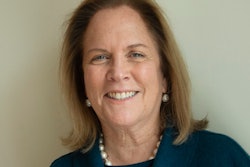I Dr. Adrianna Kezar
Dr. Adrianna Kezar
The most clear articulation of this policy approach is the “Dear Colleague” letter of February 14th that outlined how race-based scholarships, hiring and exclusive programming, graduations, and housing was illegal and discriminatory. While this letter and legal interpretation has been challenged by the courts, the policy landscape continues to push this same agenda to dismantle DEI efforts. It’s clear to all now that there will be continued cuts to DEI offices and programming and attacks on training and diversity statements in hiring and promotion at both the state and federal levels.
In 2023, I argued that this attack could be an opportunity. I suggested a move from programming and services largely offered outside the mainstream of campus, to a broader campus culture change where diversity, equity and inclusion were part of normative good practice of educators and by involving a critical mass of faculty, staff and administrators in the work of DEI. We call this approach Shared Equity Leadership (SEL).
This SEL approach emerged in my research of campuses that have made progress on closing equity gaps and creating culture change where the environment has shifted to support people from historically- marginalized backgrounds. I noted how most DEI efforts have largely not been institutionalized, nor integrated, on most campuses and remained siloed — therefore, not impacting the overall campus environment. I predicted that these efforts to “cut” DEI by these political leaders were likely to be successful. And unfortunately, they have been.
But it does not have to be this way! Right now, we can do two key things that will help to save DEI on campuses all over the country. Campuses need to stop acquiescing their commitments to what we know are positive educational approaches and start being proactive to save diversity, equity and inclusion values.
But that does not necessarily mean fighting to save existing DEI programs and services. It means looking at your approach in an entirely new way and removing the silos and integrating DEI into educators’ roles and building a culture in support of the work.
First, campuses need to shift their focus from programs/services on the side to redesign campuses to support students, faculty and staff from all backgrounds. This type of institutionalization and inclusion as normative good practice can occur in several ways. However, the most common — and successful — way that we identified in our Pullias Center research was through Shared Equity Leadership — an approach that’s all about leaders holding a different set of commitments and values as they execute their work. Values and commitments are very hard for political adversaries to attack. And their practices such as relationship building, designing systems with a systemic lens, and modeling the commitments are also hard to put under and microscope and legislate and outlaw. We also found that SEL is an approach for making true progress on equity gaps, advancing DEI agendas and creating culture change. The SEL approach embeds DEI into day-to-day campus operations among most educators on campus.
Second, we need to take stock of our approach to DEI and the concerns being raised about our means for achieving DEI goals. Certainly, some concerns are misguided but there is a lot of concern among reasonable people in the public as well. Disregarding all questioning and critique of DEI has not served our purposes. I believe it is time to reconsider how we are accomplishing our goals, but certainly not questioning their worth. Before campus leaders step away from long-held goals and values that contribute to the public good, can we use this moment to reconsider the means that have been the main concern among various critiques? To simply continue to do everything in the same way when the public is questioning our approach is likely not going to lead to success. DEI programming has been expensive because we have not done the work to do more whole system redesign; instead we have created parallel divisions of student affairs, student success and programming for specific student groups. The duplication of divisions and services is not sustainable. We need to explore whether we have gone too far in trying to protect students from controversy and differing opinions. We need to consider whether some programming is being offered in “dogmatic” ways that are creating a sense of divisiveness. We need to take seriously concerns raised even if we disagree with them to explore if these concerns have any value and to explore alternatives. Too many DEI leaders are rejecting public concerns without any time for exploration. There are many ways we can rethink our means but stay true to our end goals.
Now is the time to take stock of our means, but to also reaffirm our commitment to this work, and to take the necessary risks to redesign our approaches. Digging in to save existing program/services will likely not save DEI efforts, but strategically rethinking our approach might.
Dr. Adrianna Kezar is the the Dean’s Professor of Leadership, Wilbur-Kieffer Professor of Higher Education and Director of the Pullias Center for Higher Education, University of Southern California.

















